Real Rural Tech Talk Focuses On Future Of North Escambia Broadband Internet Service
April 10, 2021
Escambia County District 5 Commissioner Steven Barry knows that some 20,000 people in North Escambia do not have access to the internet at speeds that are defined as broadband. Some do not have access at all.
And that’s something he’s looking to change.
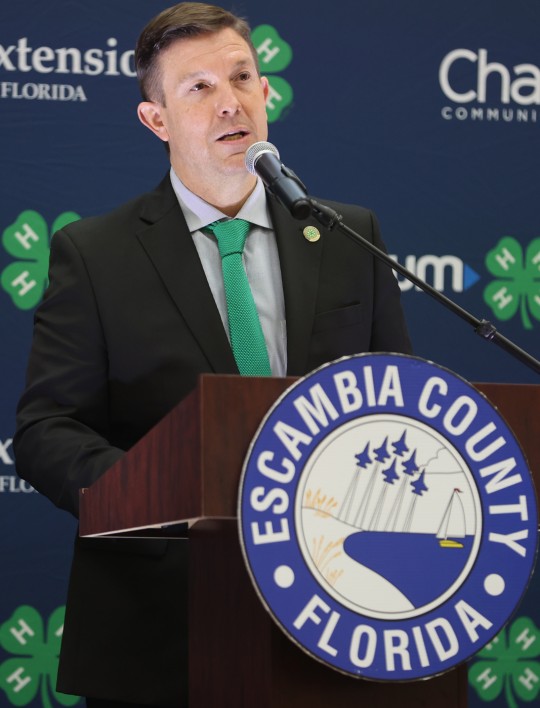 Barry hosted a “A Real Rural Tech Talk” broadband roundtable at the Escambia County 4-H Center in Cantonment Friday. He was joined by Florida Chief Financial Officer Jimmy Patronis, a Charter Communications executive and leaders from the local educational, agricultural, business and health care fields.
Barry hosted a “A Real Rural Tech Talk” broadband roundtable at the Escambia County 4-H Center in Cantonment Friday. He was joined by Florida Chief Financial Officer Jimmy Patronis, a Charter Communications executive and leaders from the local educational, agricultural, business and health care fields.
For a photo gallery, click here.
“You realize how much we depend on good internet when you have a year like 2020 and how important it is to be able to communicate, to work, to educate,” Patronis said. “The ability to expand and access broadband networks in our rural parts of the state is critical.”
“The pandemic has highlighted the need for broadband availability and adoption and Charter is committed to bridging the digital divide to positively impact rural communities,” said Marva Johnson, senior vice president of State Government Affairs Charter Communications. “As Americans across the country increasingly rely on broadband to work, learn, access health care and stay in touch with family and loved ones, bringing broadband access to more unserved areas should be a priority for all stakeholders.”
Charter is targeting public-private partnerships to expand broadband access to rural areas across the state using the Rural Digital Opportunity Fund.
For North Escambia residents, that could mean affordable internet to their homes and businesses at gigabit speeds.
“With broadband not readily available, whether it is unreliable, not unlimited, or doesn’t have quite the high speed it does in town, we are not really able to use our equipment to its fullest potential,” said Oak Grove agricultural producer Scott Walker. He said sometimes he is forced to update his equipment and do work only by traveling to Whataburger to access their wi-fi.
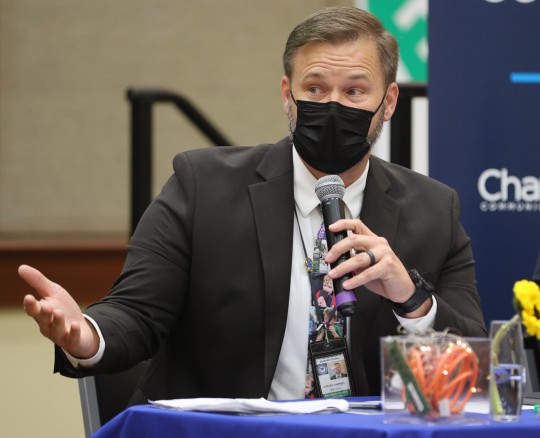 “The mission of the Escambia County School District is to close that gap for all of our students,” said Steve Harrell, director of Workforce Education for the Escambia County School District. “You create a divide between that student that has that access and the student who does not have that access.”
“The mission of the Escambia County School District is to close that gap for all of our students,” said Steve Harrell, director of Workforce Education for the Escambia County School District. “You create a divide between that student that has that access and the student who does not have that access.”
“We made sure that we have internet access at all of our schools, very high speed. We have fiber lines going all the way up to the north end,” Harrell continued. “If you are inside one of our facilities, inside those four walls, that digital device you have works very well. But when you take that home and there is no broadband at your house, that student that has that broadband access has an advantage over the child that does not.”
“I think we (Escambia County and Charter) are actually going to be able to look at some numbers and maybe some potential timelines about what may be possible,” Barry told NorthEscambia.com. “I’m appreciative to my board, and they’ve matched my urgency. They’ve supported this as a high priority.”
Barry said that within a couple of months, but perhaps as soon as just a few weeks, there may be some timelines in place for what a rural broadband program might look like in Escambia County.
Patronis told NorthEscambia.com that high speed broadband in North Escambia could also mean economic opportunity.
“When we recruit businesses into this state, it’s critical that they have access to water and sewer. Large businesses need that type of level of infrastructure. This is no different. They had to have connectivity too. So you take areas that are maybe underserved, if you bring a job creator to that footprint then you’re bringing infrastructure there…so a rising tide lifts all boats — better quality of life, better quality of services, but also better jobs often follow with those type of investments when they’re made.”
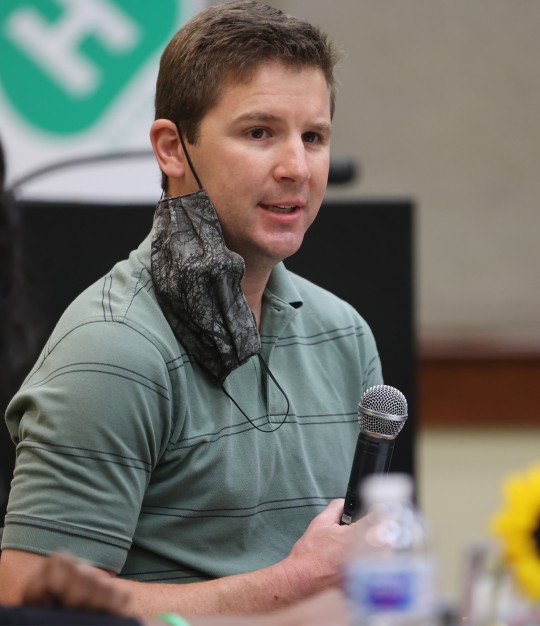 Johnson said it’s often not financially feasible for a company like Charter to install infrastructure in a sparsely populated area, but the Rural Digital Opportunity Fund will make that possible.
Johnson said it’s often not financially feasible for a company like Charter to install infrastructure in a sparsely populated area, but the Rural Digital Opportunity Fund will make that possible.
“That’s where these partnerships come through whether it be federal dollars or state dollars, or what we’ve got now in this particular dialogue is a contribution from charter where those dollars come together,” Partronis said. “For Charter, this is a long game play. Their return on investment is not today; it’s not tomorrow. But it could be 10 or 15 years from now because as you have that infrastructure available, then you have a manufacturer that may decide to come there.”
“We’re on a very attractive court for Interstate 10 where distribution really can take place here. This part of the state is the closest part to the Midwest in the whole state of Florida, but you can’t make it attractive and shovel ready unless you have the infrastructure in the ground to make a business want to build…putting the infrastructure in the ground here in Northwest Florida to me is hugely important to diversify our economy.”
For a photo gallery, click here.
Pictured: Participants in “A Real Rural Tech Talk” about broadband internet access Friday in Cantonment included Florida Chief Financial Officer Jimmy Patronis (top), Escambia County District 5 Commissioner Steven Barry (top inset) Director of Workforce Education for the Escambia County School District Steve Harrell (middle inset), North Escambia agricultural producer Scott Walker (bottom inset), Senior Vice President of State Government Affairs Charter Communications Marva Johnson (below), President Ascension Sacred Heart Hospital Pensacola Dawn Rudolph (second below), and 4-H Escambia Council Treasurer Jessica Conti (third below). NorthEscambia.com photos, click to enlarge.
Comments
9 Responses to “Real Rural Tech Talk Focuses On Future Of North Escambia Broadband Internet Service”



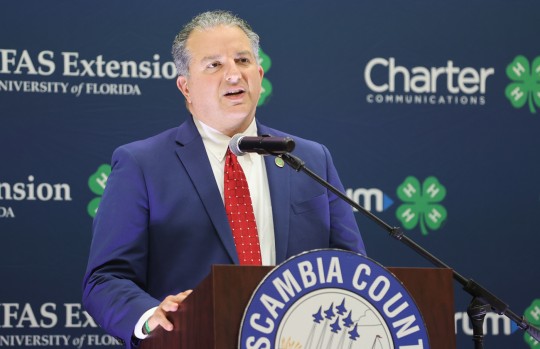
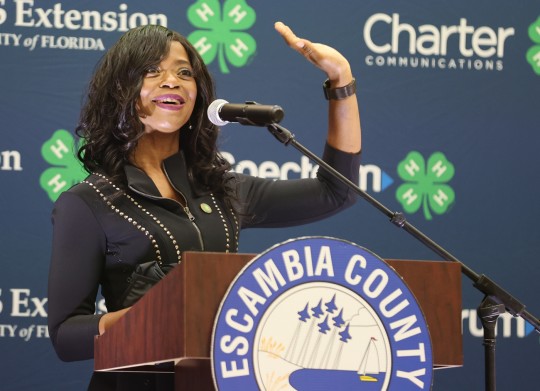
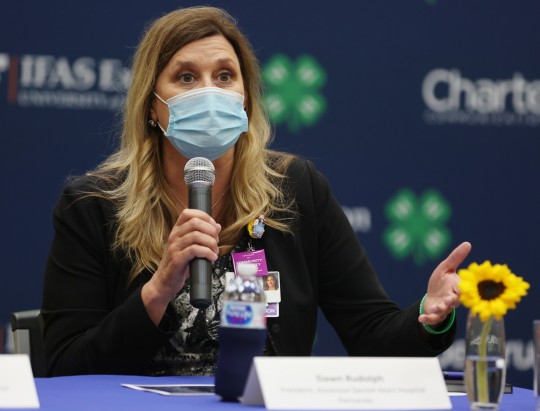
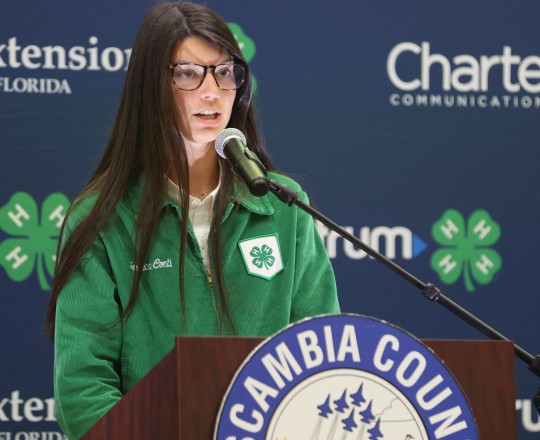
As someone that lives in Walnut Hill now I use a combination of Viasat and a mobile hotspot for internet. I don’t believe anything from these initiatives will happen in any type of reasonable timeframe (in other words 5-10-15 years from now doesn’t help me). Heck, for the three houses on the road I live on there’s no way a company like Charter will run fiber, or anything resembling gigabit speeds out here. They would gladly take the government money, and then we’d never see any progress out of it. Isn’t that basically what they did up on New York?
I have preordered Starlink. Fingers crossed it’s released by the end of 2021 like they say it will. If I can drop Viasat for actual high-speed, less than half the price, and unlimited internet I’ll do it on day 1 – and no, Viasat is not high speed or truly unlimited.
I have their most expensive service and as I type this I have a blazing 4Mbps (nowhere near the 150 they claim), our quota reset on the 8th, and we don’t have a tree in sight to obstruct the view. If it does speed up any we can hit the 150 gig cap within 2 weeks easily (1 week depending on school and work), and while after that you don’t get cut off you do get “deprioritized” and speeds come to an even slower crawl. I probably use my mobile hotspot more at this point. It’s more reliable for work and school video calls.
Having said that, we knew what we were in for when we bought our house and moved out of Pensacola last year. While I would love to have true high-speed internet again, I don’t want to do it at the cost of my sanity – haha.
I hope the county looks at other alternatives than Charter Communications/Spectrum. Many residences, including mine are located a distance off the roadway and unless the county or Charter Communications is going to give a substantial discount to run the fiber from the roadway to the end user, this is not going to be economically feasible for a large number of users. Also, having fiber (cable) above ground is not a good idea in case of a direct hit from a hurricane. Ask anyone who lived in the Panama City Beach area about how long it took to restore service when 99% of the telephone poles were destroyed. Seems like cable(fiber) is already behind the technology today. An ISP would most likely need a subsidy from the county to be economically feasible.
Are there other internet providers interested in partnering with the county? I know you have Verizon, AT&T, along with Other communication carriers out there who provide internet access. I believe the citizens of the north end of county would be well serve if others were given opportunity to partner with the county.
WHAT IS ALL THIS GOING COST TO HAVE IT IN YOUR HOME???? AS NOW I HAVE EXEDE VIASAT FROM EREC, AND IT ONLY COST ME $86.06 PER MONTH !!!!!!
Charter(spectrum) wants $9k to run cable to me 700′. A cost that was double what erec charged to run underground power to me. It stops on the pole on the parcel before my parcel. I have no faith in them caring. The folks at the local office are also extremely rude.
>>Does this mean we can get rid of Spectrum for internet service?
(Charter owns Spectrum.)
Does this mean we can get rid of Spectrum for internet service?
will believe it when i see it.
Where is Santa Rosa commissioners??? As an example, Jay high school has a totally unreliable internet connection. Most kids have zero internet at their home, AT &T is spotty and Verizon does not work in most areas. Maybe the new Santa Rosa County school superintendent will make the rural north end a priority as they have been forgotten for far too long!